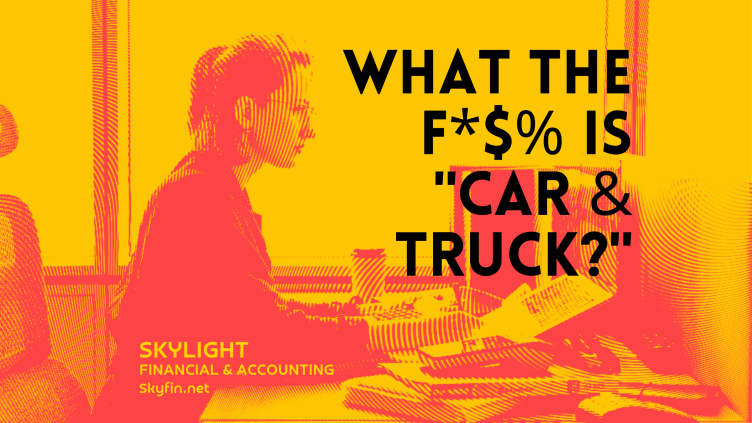
Your financial reports tell a story beyond the bottom line that can either confuse or convince your investors. Your goal is to make sure that story is a compelling read.
Non-specific categories like “Car & Truck”, “Meals and Entertainment”, and “Miscellaneous Expense” are not going to excite your readers. These categories are bland, meaningless, and leave room for confusion.
Picture a SaaS company in New York City with a “Truck Expense”.
… What does that even mean? What is the expense actually for?
… How does it move the business forward?
If your reports read like this, it’s time to dig deeper to get to the actionable insights hiding in your financials.
Here are three ways to fine-tune your chart of accounts to powerfully convey the value and story of your business:
1. Shift from Macro to Micro.
What I mean:
Less is more. When sharing financial results with investors, stakeholders, managers, or even yourself, take a step back and aim for a bird’s-eye view. Too much information clutters the message.
How to do it:
Start with broad groupings and work your way down. Consider ways to expand and contract your financial reports. Remember, less is more to start with. Think of your account groupings as an outline—an organized way to structure your thinking about how the business operates.
Example:
Here’s a simple outline of gross account groupings for a SaaS company:
- Revenue
- Cost of Revenue
- Labor Expense
- Selling Expense
- General and Administrative (G&A) Expense
- Net Income (EBITDA)
- Other Expenses (interest, tax, depreciation/amortization)
2. Give Your Sub-Accounts the Microphone.
What I mean:
This is where the story is told. Within these groupings lies the real narrative of your business.
Every posting-level account should be clear and specific. Clarity benefits not only your investors, but also yourself.
Moving as fast as you are, you’re not going to remember every expense, so thoughtfully set the sub-accounts up to speak for you.
How to do it:
Don’t discard expenses as if they have no value. Step back, take a look at how that expense impacts your company’s operations, and classify it accordingly.
Examples:
If you spend $2,500 at Bowlero for a client appreciation party, don’t lump this into “Meals and Entertainment.” Classify it as a promotional expense under “Selling.”
If you have an annual subscription to LinkedIn, don’t lose this in “Dues and Subscriptions.” Create a subcategory called “Business Development” or “Lead Engagement” still under “Selling”.
Little tweaks to language like this suddenly give your expenses power and purpose. The more specific and descriptive you can be, the easier it will be to justify your costs and develop your ongoing operational budget.
3. Consider Replacement Costs in a Founder-Led Business.
What I mean:
What are the costs of running your business without you? I’m the one to tell business owners to pay themselves first! But, in some cases, if you don’t isolate founder costs and benefits, you can’t understand the true economics of your business.
How to do it:
I’m not suggesting you track every trip to your local coffee shop, but the business won’t continue to pay your car lease after you sell, nor your Hulu subscription, nor your ‘remote office expense’ (a.k.a., rent).
Make sure you know how to isolate these costs when designing a budget or forecast. Consider shifting these costs to “Other Expenses” so they fall below Net Income (EBITDA).
You can then add an estimate for the ‘Replacement Cost” above the line (EBITDA) and net it out against “Other Expense”, or “Founder Costs” below the line.
Also, consider using a class or tagging feature to easily filter these expenses when the time comes to scrutinize true operational costs.
So, what the f*$% is “Car and Truck”? It’s a critical aspect of accounting that can shape the perception of your business.
These strategies are about clarifying the nature of your business while simultaneously optimizing its attractiveness.

